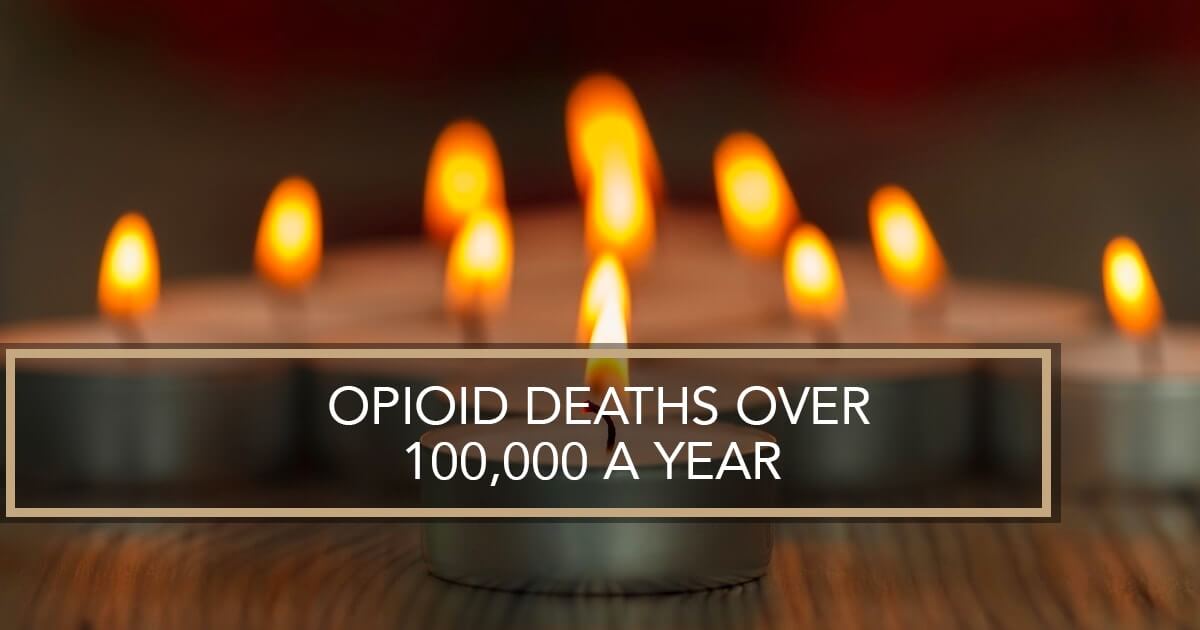According to the Centers for Disease Control and Prevention, the number of drug overdose deaths throughout the United States reached over 100,000 within 12 months for the very first time. The opioid death rate from April 2020 to April 2021 rose by 29 percent, which is one of the most dramatic increases ever recorded. This grim milestone only further highlights the opioid addiction crisis facing the nation.
How the Opioid Epidemic is Impacting Different States
The opioid epidemic is especially troubling in certain states, as Vermont saw the most significant increase, with an almost 70% rise in overdose deaths. Other states are also greatly impacted by the opioid crisis, as West Virginia (62%), Kentucky (55%), Louisiana (52%), and Tennessee (50%) all experienced a large increase in the opioid death rate. Drug overdose deaths only decreased in four states, including South Dakota, New Hampshire, New Jersey, and Delaware. South Dakota experienced the most significant decrease in overdose deaths by nearly 20%. Fentanyl and other synthetic opioids accounted for over 75% of drug overdose deaths. Psychostimulant drugs, which were primarily methamphetamine, also increased in 2021. Overdose deaths usually occur due to the use of multiple drugs, as fentanyl is often combined with cocaine or methamphetamine.
Opioid Crisis and the Covid-19 Pandemic
The overlap between the opioid crisis and the Covid-19 pandemic continues to make a significant impact throughout the United States. Overdose deaths and Covid-19 are two of the main reasons the life expectancy in 2020 dramatically dropped for the first time since World War II. The increasing amount of stress and social isolation from the pandemic only further increased the number of opioid deaths in 2020. An inability to access support groups also most likely played a role in furthering increasing the opioid addiction crisis across the nation.
Signs of Opioid Overdose
Understanding the signs of opioid overdose is essential in decreasing the opioid death rate. A few of the most common signs of an opioid overdose include the loss of consciousness, choking sounds, vomiting, or a lack of responsiveness. Sometimes an individual may be awake but unable to talk. The skin tone can turn bluish-purple for lighter-skinned people, while the skin turns grayer for darker-skinned people. The lips and fingernails can also turn purplish-black or blue. Breathing may be very shallow, slow, erratic, or even stopped. Sometimes the heartbeat will be irregular, and the body can be limp.
How to Respond to an Opioid Overdose
Knowing how to respond to an opioid overdose is essential in trying to save someone’s life. The first step is to try to wake the person up and call 911 as soon as you can if you are unable to wake them. You will need to follow the directions of the 911 operator, as you may need to perform rescue breathing while you wait for medical personnel to arrive on the scene. Once the person begins to breathe again, it’s essential to place them in the recovery position by putting them on their side to help prevent choking until emergency help arrives at your location.
Opioid Treatment Programs
Taking a proactive approach concerning the opioid epidemic is essential in decreasing the number of deaths in the United States. One way to lessen the opioid death toll throughout the nation is to educate the public and bring greater awareness to the problem. Opioid treatment programs are also beneficial in giving people the help they need to overcome opioid use disorder. Increasing access to numerous medications can also help prevent opioid overdose in individuals, such as naloxone, methadone, and buprenorphine.
Currently, there are three primary stages of opioid treatment programs. The length of the medical treatment is based on the needs of the individual, as the detox phase is around a week, while the rehab phase can range between 30 to 90 days for most people. Once complete, ongoing treatment for opioid use disorder is a lifetime commitment to staying sober against this addiction. Working with trained professionals during opioid treatment programs can give you the help you need in overcoming opioid use disorder.
Closing Thoughts
Opioid addiction remains a significant problem throughout the United States. The opioid crisis is especially problematic in some regions of the country, as taking the necessary steps to help people get the assistance they need for opioid use disorder is essential in decreasing the number of overdose deaths. Understanding the signs of opioid overdose is also crucial in saving lives. Raising awareness about the opioid death rate and giving people access to opioid treatment programs is necessary to overcome this public crisis. The opioid epidemic will only continue to be a major problem, but following these steps can help lower the death rate of the opioid crisis.
The Dunes East Hampton offers addiction treatment services on Long Island, New York.








